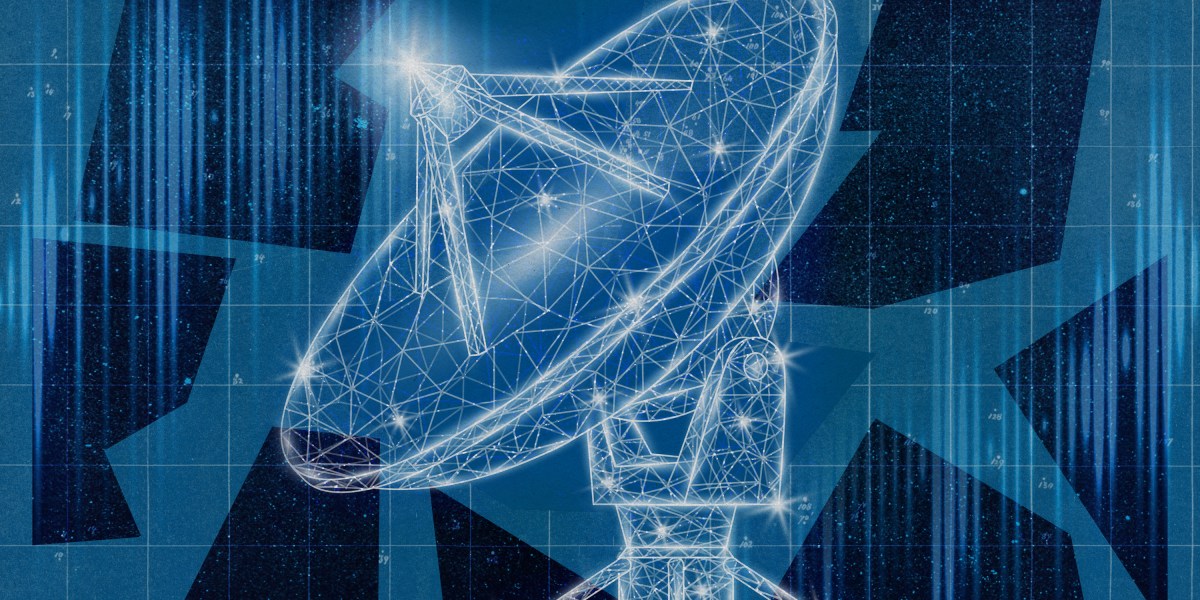Inside the quest to map the universe with mysterious bursts of radio energy

As a leader in the field and a key player in the advancement of FRB research, Macquart would have been interviewed for this piece. But he died of a heart attack one week after the paper was published, at the age of 45. FRB researchers began to call the relationship between dispersion and distance the “Macquart relation,” in honor of his memory and his push for the groundbreaking idea that FRBs could be used for cosmology.
Proving that the Macquart relation would hold at greater distances became not just a scientific quest but also an emotional one.
“I remember thinking that I know something about the universe that no one else knows.”
The researchers knew that the ASKAP telescope was capable of detecting bursts from very far away—they just needed to find one. Whenever the telescope detected an FRB, Ryder was tasked with helping to determine where it had originated. It took much longer than he would have liked. But one morning in July 2022, after many months of frustration, Ryder downloaded the newest data email from the European Southern Observatory and began to scroll through the spectrum data. Scrolling, scrolling, scrolling—and then there it was: light from 8 billion years ago, or a redshift of one, symbolized by two very close, bright lines on the computer screen, showing the optical emissions from oxygen. “I remember thinking that I know something about the universe that no one else knows,” he says. “I wanted to jump onto a Slack and tell everyone, but then I thought: No, just sit here and revel in this. It has taken a lot to get to this point.”
With the October 2023 Science paper, the team had basically doubled the distance baseline for the Macquart relation, honoring Macquart’s memory in the best way they knew how. The distance jump was significant because Ryder and the others on his team wanted to confirm that their work would hold true even for FRBs whose light comes from so far away that it reflects a much younger universe. They also wanted to establish that it was possible to find FRBs at this redshift, because astronomers need to collect evidence about many more like this one in order to create the cosmological map that motivates so much FRB research.
“It’s encouraging that the Macquart relation does still seem to hold, and that we can still see fast radio bursts coming from those distances,” Ryder said. “We assume that there are many more out there.”
Mapping the cosmic web
The missing stuff that lies between galaxies, which should contain the majority of the matter in the universe, is often called the cosmic web. The diffuse gases aren’t floating like random clouds; they’re strung together more like a spiderweb, a complex weaving of delicate filaments that stretches as the galaxies at their nodes grow and shift. This gas probably escaped from galaxies into the space beyond when the galaxies first formed, shoved outward by massive explosions.
“We don’t understand how gas is pushed in and out of galaxies. It’s fundamental for understanding how galaxies form and evolve,” says Kiyoshi Masui, the director of MIT’s Synoptic Radio Lab. “We only exist because stars exist, and yet this process of building up the building blocks of the universe is poorly understood … Our ability to model that is the gaping hole in our understanding of how the universe works.”
Astronomers are also working to build large-scale maps of galaxies in order to precisely measure the expansion of the universe. But the cosmological modeling underway with FRBs should create a picture of invisible gasses between galaxies, one that currently does not exist. To build a three-dimensional map of this cosmic web, astronomers will need precise data on thousands of FRBs from regions near Earth and from very far away, like the FRB at redshift one. “Ultimately, fast radio bursts will give you a very detailed picture of how gas gets pushed around,” Masui says. “To get to the cosmological data, samples have to get bigger, but not a lot bigger.”


